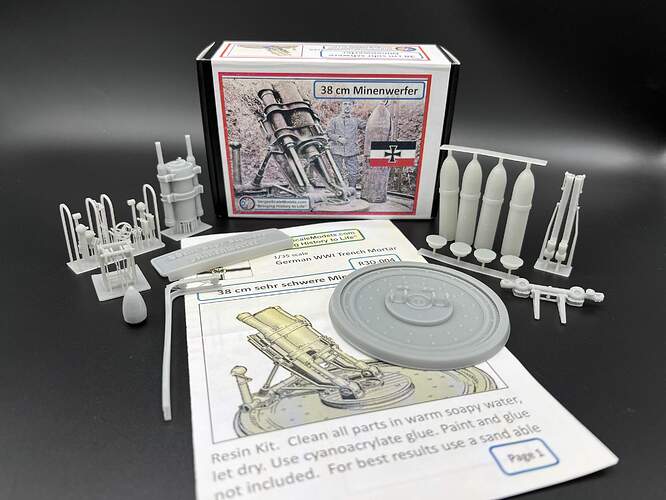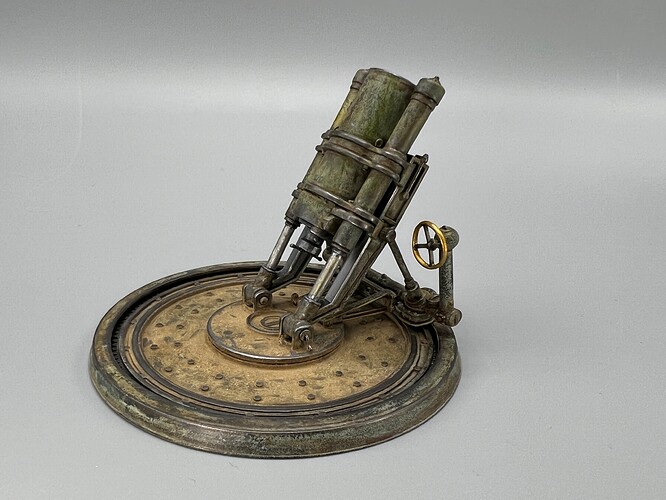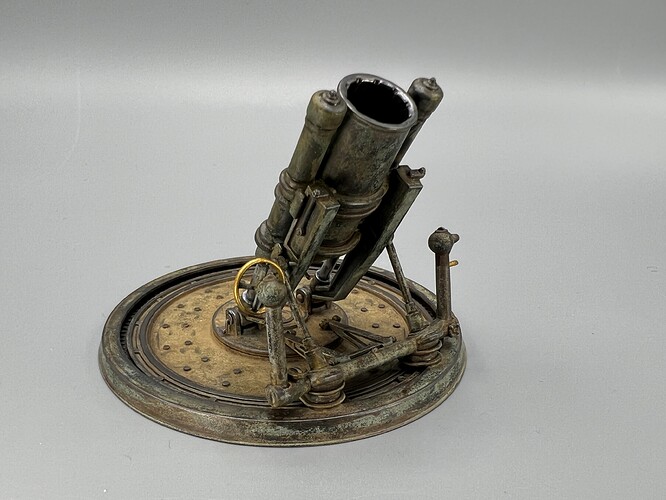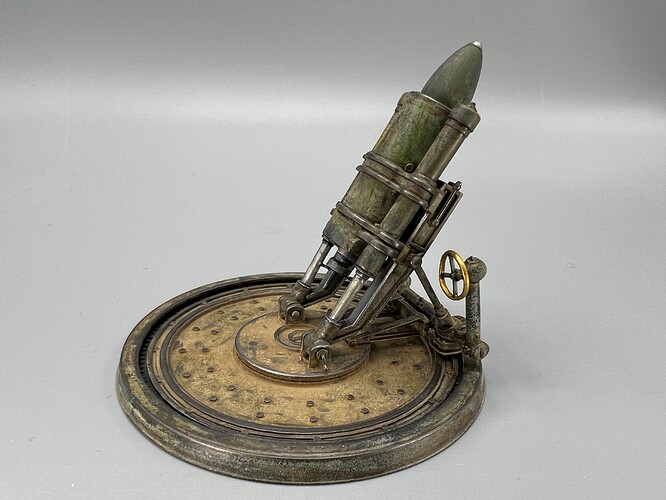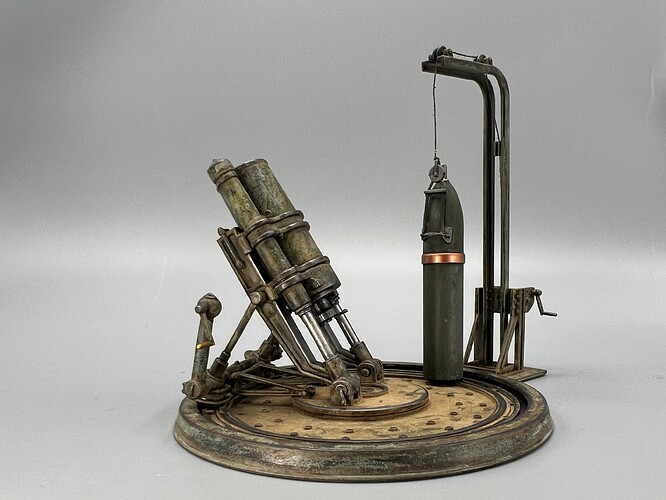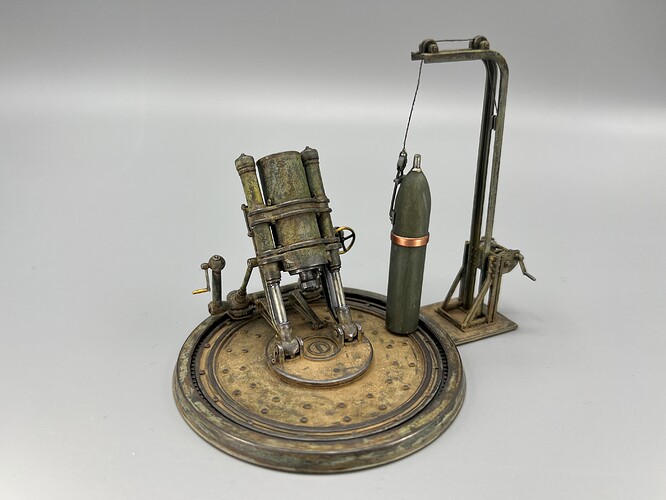Prior to the start of WW1, Germany correctly assessed the need for heavy artillery to reduce enemy fixed fortifications and entrenchments. They developed a decent variety of heavy howitzers and mortars for this task. One of the simplest was the 38cm Heavy Trench Mortar. It lobbed a massive shell that came down nearly vertically to punch through roofs of fortifications and demolish sections of trenches or wire. Unusually, the shell was longer than the barrel.
Vargas Scale Models has the only model of this interesting mortar. It is in 1:35 scale and consists of about 25 3D printed resin parts. Vargas also offers additional mortar shells to go with the kit. The kit is well detailed and goes together well. I had to drill out all of the mating holes and did some minor sanding on the cylindrical parts. The fit was decent - no putty was required. The instructions are a color printed 8.5x11 two-sided page with color coded 3D renders with arrows and part numbers. The instructions include a parts list. No painting guide or decals are included.
Vargas Scale Models sells directly to the modeler at:
Products – vargas_lg (vargas-lg.myshopify.com)
I left the shell hoist unattached to allow choices in display and modified one shell to allow it to be optionally displayed in the barrel.
I washed the kit in warm soapy water to remove any uncured resin. After assembly, I primed it with Mr Surfacer 1500 black rattle can. This sandable, self-leveling primer is the secret to building 3D printed kits. It makes the fine print striations disappear. I painted the model with Tamiya paints and used the hairspray technique to give it that aged patina. Weathering was accomplished with AK enamel weathering products and AK pigments. The shiny cylinders and slides were done with Alcad Aluminum and then polished with Uschi Chrome pigment for a nice metal finish.
All in all, I’m pleased with the results and it makes nice addition to my collect of Great War artillery.

